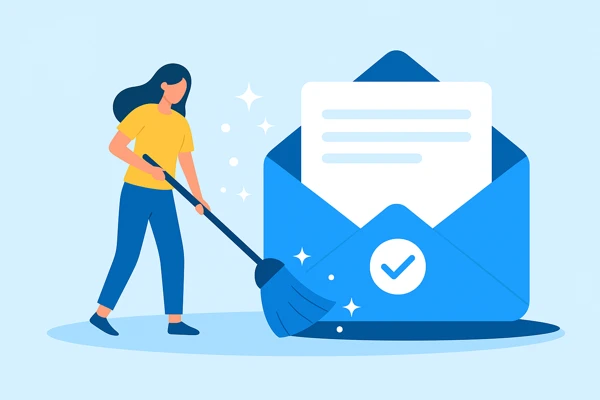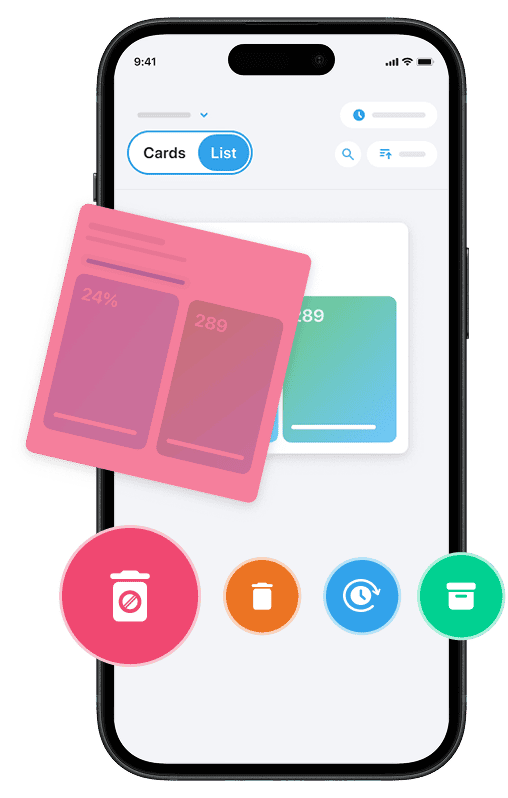Maintaining good email hygiene is essential for anyone aiming to keep their inbox clean, organized, and stress-free. Email hygiene involves the regular practice of verifying, cleaning, and managing your email list or addresses to remove invalid or inactive contacts, reduce the risk of spam traps, and enhance overall email deliverability. By focusing on engaged subscribers and eliminating outdated or suspicious email addresses, you not only boost your sender reputation but also ensure your marketing emails reach real, interested people—rather than being lost or flagged as spam.
This process is key for fostering a strong email sender reputation, maximizing engagement, and ultimately achieving successful email marketing campaigns that respect your subscribers’ preferences and time.
And if you want to keep your inbox 100% free of spam and unwanted emails, you can use our Cleanfox platform—completely free of charge.
Understanding Email Hygiene
Key Components of Email Hygiene
Email hygiene is a critical process for ensuring your email marketing efforts remain effective. It involves maintaining an accurate, relevant, and engaged list of email addresses. Several key components contribute to achieving proper email hygiene.
First, email verification plays a vital role. It ensures that the email addresses on your list are both valid and active. This can be achieved through real-time email validation tools or by sending confirmation emails to your subscribers. By removing invalid addresses, you can avoid high bounce rates and protect your sender reputation.
Next, eliminating duplicate entries from your email list is essential. This prevents redundancy, ensures that each subscriber receives your messages only once, and keeps your list clean and organized.
Managing subscriber engagement is another important aspect. Regularly monitoring metrics like open rates and click-through rates helps you identify inactive or unengaged subscribers. You can then decide whether to remove them or attempt to re-engage them. This step enhances list health and improves overall email deliverability.
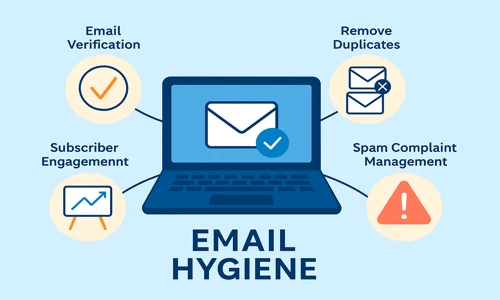
Respecting subscriber preferences is equally important. Allowing recipients to choose the types and frequency of emails they receive leads to higher engagement and reduces the likelihood of your emails being marked as spam.
Additionally, implementing robust spam complaint management practices is essential. Promptly removing complainers and analyzing complaint patterns helps protect your sender reputation and maintain list hygiene.
By combining these components into a cohesive email hygiene strategy, you can significantly reduce invalid or unwanted email addresses, prevent spam traps, and ensure your emails reach real and interested recipients. The result? Improved deliverability, increased engagement, and a more successful email marketing program.
Practices to Enhance Email Organization
Creating an Effective Email Filing System
To maintain a clean and organized inbox, developing an effective email filing system is essential. One practical approach involves creating separate folders or labels for different projects, categories, or senders.
For example, you can have folders dedicated to work projects, personal communications, or newsletters. This method helps you quickly locate emails when needed and keeps your inbox uncluttered by categorizing both incoming and outgoing messages appropriately. If you use Gmail, one of the easiest ways to stay organized is to focus on unread messages first — here’s how to show only unread emails in Gmail. This helps you prioritize what really matters and prevent important messages from being buried under clutter.
Following simple rules—such as assigning every email to its relevant folder—makes the system intuitive and easy to maintain. This will greatly improve your email list health and overall email hygiene.
Setting Up Filters and Rules
Filters and rules are powerful tools for automating your email organization. By setting criteria based on sender, subject keywords, or email priority, you can automatically direct emails into specific folders or mark them for different actions.
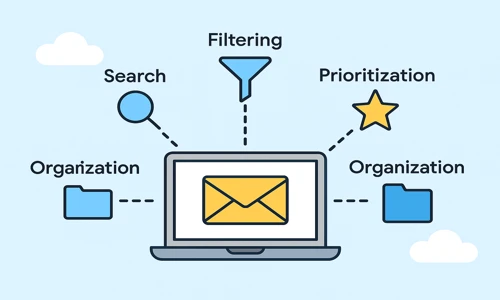
This reduces manual sorting and ensures important messages never get buried. For instance, emails from your subscribers or clients can be tagged as high priority, while promotional or marketing emails can be filtered into separate folders for review at your convenience. Not only does this streamline your workflow, but it also prevents your inbox from becoming overwhelmed with clutter — an essential step to maintain good email hygiene and improve email deliverability.
Maintaining a Regular Cleaning Schedule
Even the best organizational system needs regular maintenance. A consistent cleaning schedule helps remove outdated messages, unsubscribe from irrelevant mailing lists, and delete or archive emails that no longer serve a purpose.
Setting aside time weekly or monthly to scrub your email list and clear your inbox supports good email hygiene by reducing the buildup of invalid or unnecessary email addresses. This can negatively impact your sender reputation and increase the likelihood of spam status. This ongoing commitment keeps your email environment stress-free, improving your ability to focus on meaningful communication and maintain a healthy, well-organized email list.
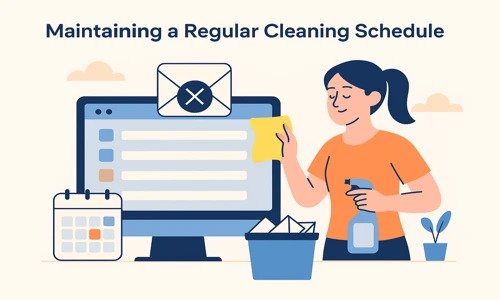
Tools and Techniques to Maintain Email Hygiene
Email Management Software
Leveraging email management software is a highly effective way to maintain email hygiene and optimize your inbox organization. Tools like Clean Email offer smart features such as automatic cleaning suggestions, unsubscriber options, and smart folders that help you effortlessly sort through your messages while ensuring your data remains private and secure. These applications often support multiple email providers and platforms, allowing you to manage all your email accounts in one place. For even more options, take a look at our full guide on the best email management tools to organize your inbox in 2025.
Say goodbye to spam, clutter, and chaos.
Our smart email cleaner filters out junk, organizes your inbox, and helps you focus on what really matters.
✅ Block spam automatically
✅ Organize emails by priority
✅ Keep your inbox clean
✅ Clean old emails you don’t read
📱 Available on the App Store and Google Play.
Additionally, many email list cleaning services, including Twilio SendGrid and ZeroBounce, provide real-time email validation APIs that catch problematic or invalid email addresses as they enter your system. This protects your lists from spam traps and increases overall email deliverability. Platforms like HubSpot and Moosend also combine list management with CRM capabilities, enabling you to maintain good email hygiene by keeping your data synchronized and segmented based on subscriber behavior and preferences. This enhances engagement and improves your sender reputation.
Benefits of Regular Email Cleanups
Regularly cleaning your email lists offers significant benefits for your email marketing efforts and sender reputation. By removing invalid, inactive, or risky email addresses, you lower bounce rates, reduce the chance of hitting spam traps, and minimize spam complaints—all of which improve your deliverability and ensure your emails reach the inbox rather than the spam folder. Continuous cleaning also optimizes list health, keeping your subscriber base engaged and responsive, which translates into better campaign performance.
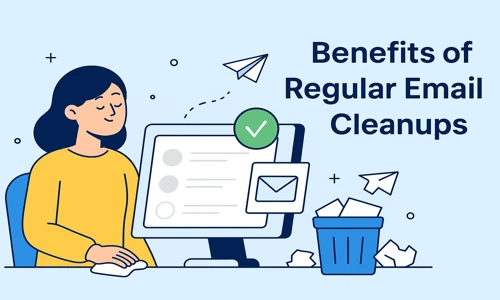
Furthermore, ongoing list hygiene efforts protect your sender reputation by preventing costly deliverability issues that arise from sending to outdated or unverified addresses. Performing regular cleanups, ideally through a combination of automated tools and manual reviews, results in a cleaner email environment that supports efficient communication and successful email marketing outcomes.
Conclusion 🚀
Maintaining good email hygiene is essential for keeping your inbox organized, enhancing email deliverability, and safeguarding your sender reputation. By routinely cleaning and verifying your email addresses, removing inactive or invalid contacts, and honoring subscriber preferences, you can cultivate a healthy, engaged email list.
Leverage tools such as email validation APIs and management software to streamline this process, ensuring your messages reach real people and avoid spam traps. Establish a consistent email cleaning schedule and adopt best practices to enjoy a stress-free inbox and more impactful email marketing campaigns.
Start implementing good email hygiene today and experience immediate benefits.
FAQ 🎯
What does email hygiene mean?
Email hygiene refers to the process of keeping your email list clean, accurate, and up-to-date. It involves removing invalid, inactive, or unengaged email addresses to improve deliverability and engagement. This process includes verifying addresses, eliminating duplicates, and managing subscriber preferences to ensure your messages effectively reach the intended recipients.
How do I send an email about personal hygiene?
To send an email about personal hygiene, start with a clear subject line, such as “Personal Hygiene Reminder.” Begin the email with a polite greeting, then explain the purpose concisely, focusing on the key points. Maintain a professional and positive tone throughout. Conclude with a courteous closing and include your signature. Always proofread your email before sending.
What are the 4 C’s of email etiquette?
The 4 C’s of email etiquette are:
- Complete – Include all relevant information.
- Clear – Make the message easy to understand.
- Concise – Keep it short and to the point.
- Courteous – Use polite language and maintain a respectful tone.
What practice is email list hygiene?
Email list hygiene is the practice of regularly cleaning and maintaining an email list. This involves removing invalid, inactive, or disengaged addresses to improve deliverability, reduce bounce rates, avoid spam complaints, and enhance engagement and sender reputation. Key practices include list audits, validation, segmentation, and re-engagement campaigns.
Enjoyed this article? Keep building Healthy Digital Habits with our guide: ‘10 Digital Healthy Habits to Improve Your Focus, Sleep and Health‘.
And don’t forget to explore the rest of our blog for more practical, everyday tips!


